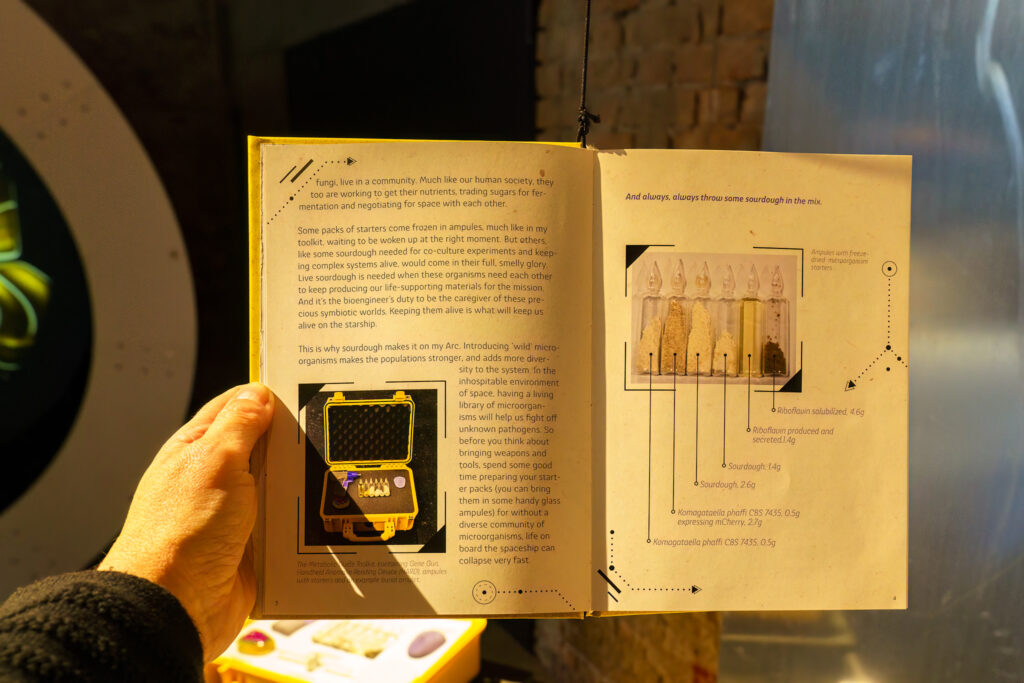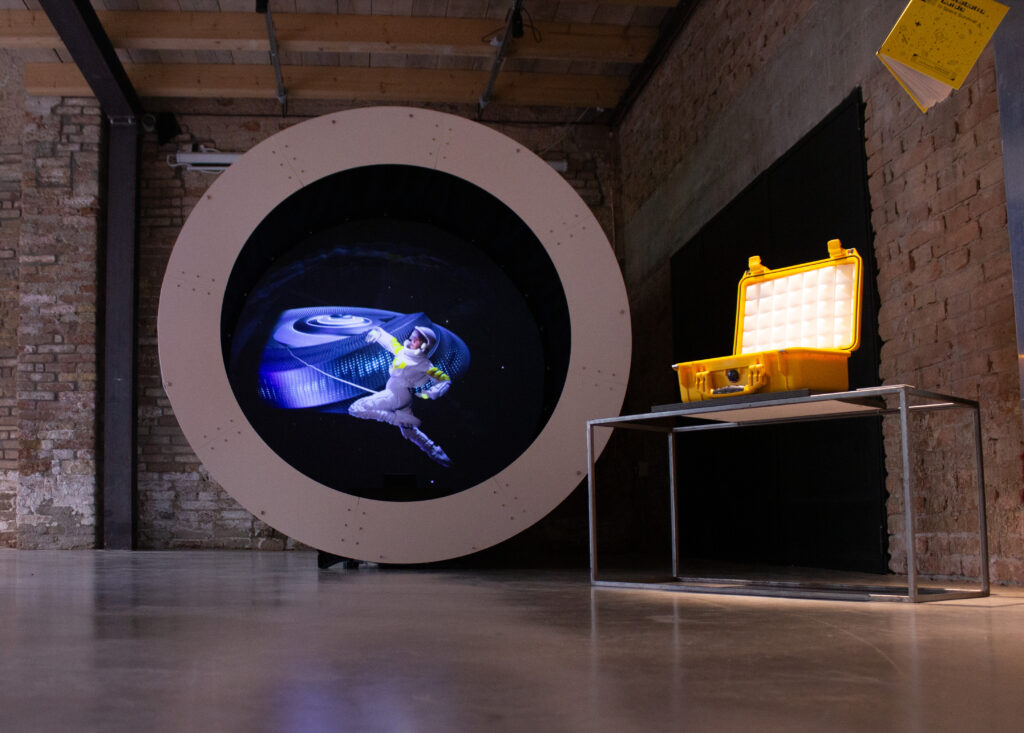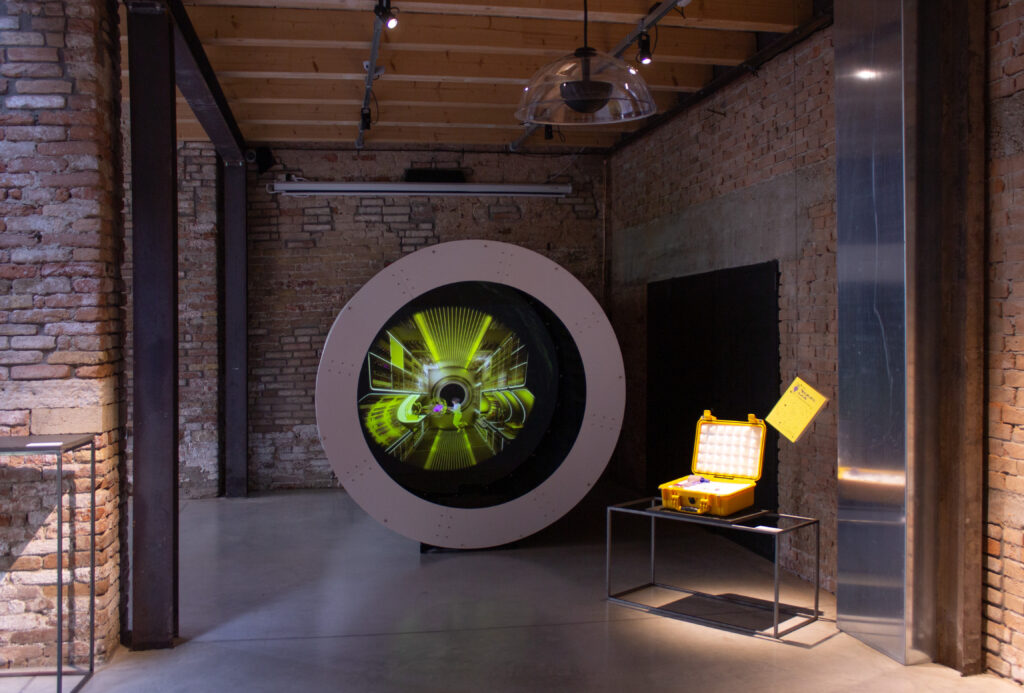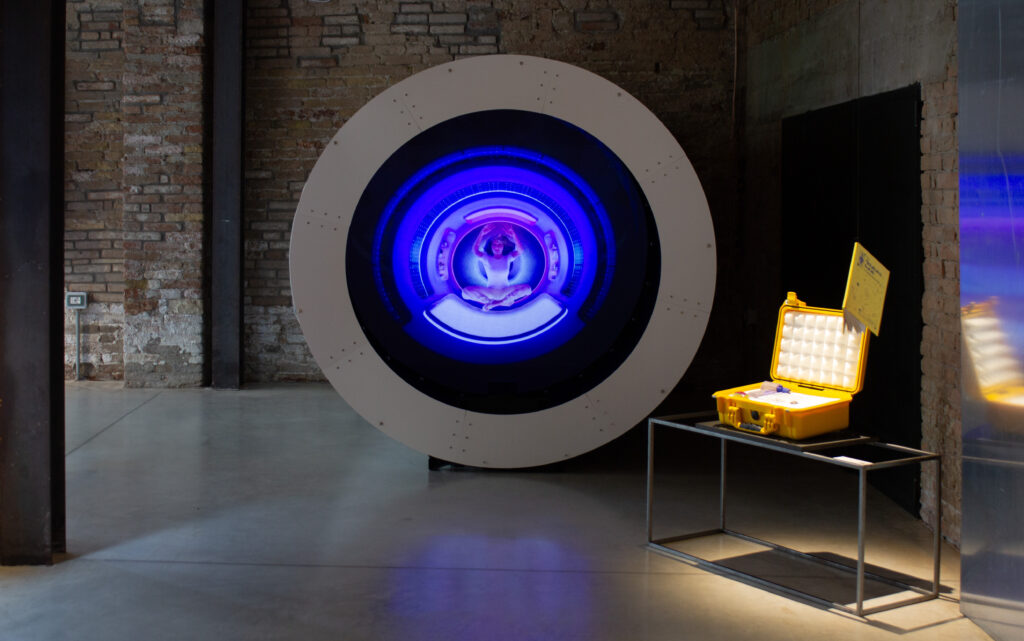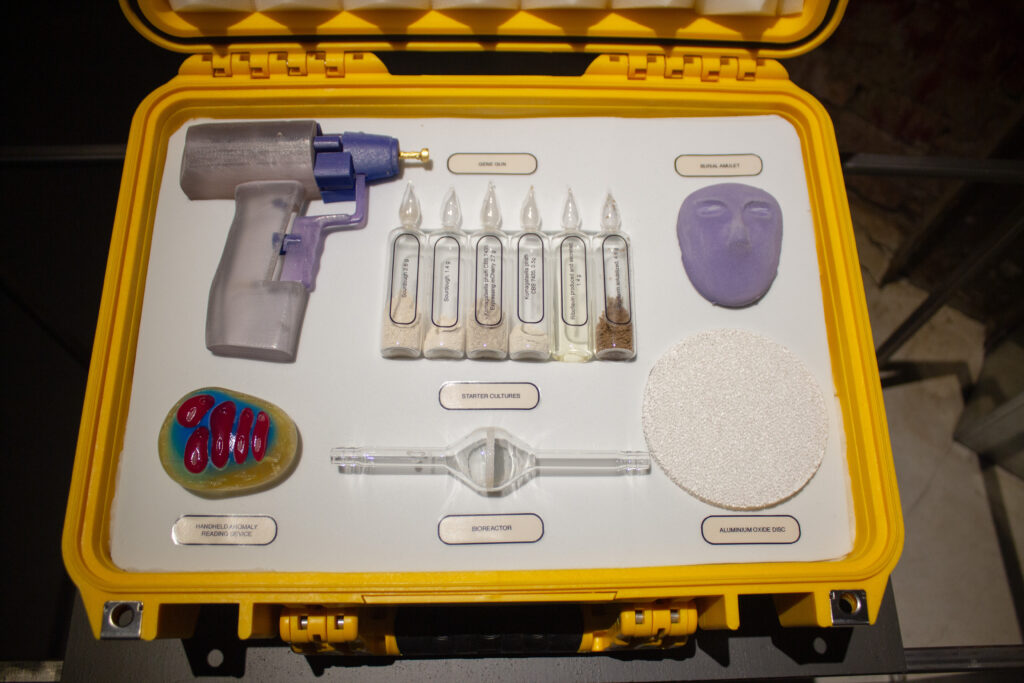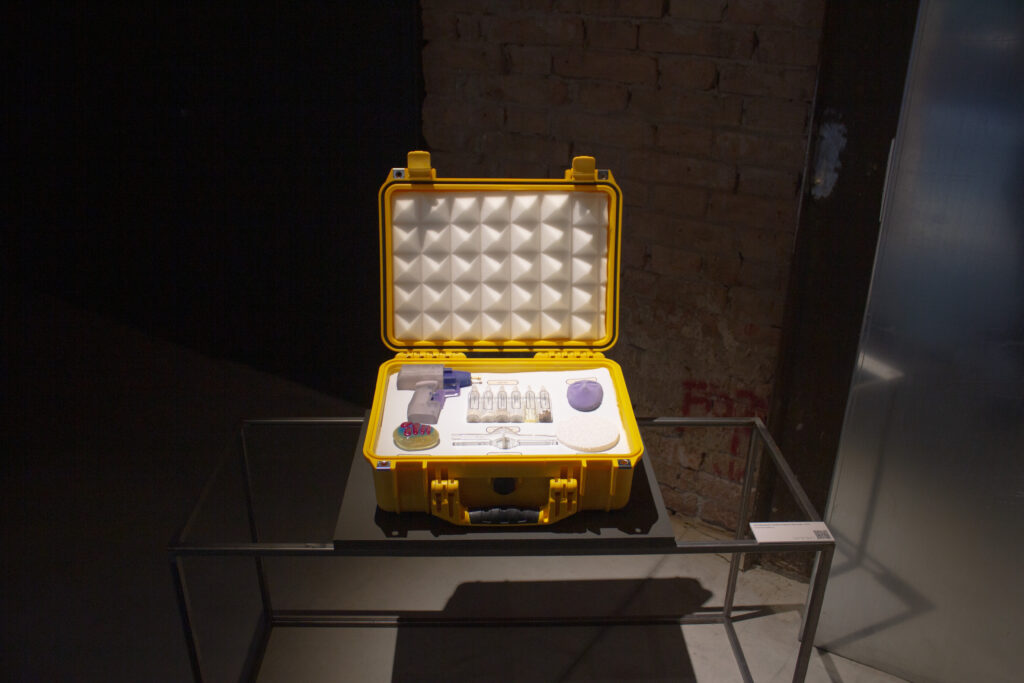The Metabolic Guide to Space Survival is a multidisciplinary exploration of microbial life as a key to long-term survival in space. Framed through the voice of fictional character Chief Bioengineer Mira Kordan, age 75, living aboard the starship Möbius, the work unfolds across three interwoven forms: a speculative design toolkit, a narrative guidebook, and an architectural installation animated by holographic projections of Mira navigating life in zero gravity.
Developed in collaboration with three research labs in Vienna, the project draws on contemporary bioengineering techniques to imagine a future sustained by yeast, fungi, and other fermenting agents. From microbial food systems to DIY vaccine production, Pulejkova translates hard science into poetic possibility. Written from Mira’s perspective, the guide offers instructions on how to use microbes in space using the tools in the suitcase, including a full three-course microbial menu: a starter, main dish, and even a cheesecake dessert, all conceived in collaboration with scientist Diethard Mattanovich and made entirely from living cultures.
Encased in a striking yellow suitcase, the toolkit offers “essentials” for space-bound travelers: sourdough starters sealed in glass ampules, a gold-particle gene gun, and a zero-gravity bioreactor—each designed to support life beyond Earth.
The installation offers a glimpse into a life-size tunnel mimicking the Möbius’ interior. A holographic projection of Mira floats through laboratory, living quarters, and cosmic vistas. Her voice drifts through the hum of machinery, sharing humour-infused logbook reflections on survival, ethics, and the ecological precarity of sealed environments, both celestial and Earth-bound.
Using humour to portray ethical considerations and hard truths about realities of space travel, the work offers an insight into the cutting-edge science of today, and sets up the course of how it might evolve in the future. Taking the hermetically sealed environment of a spaceship as a starting point, The Metabolic Guide to Space Survival probes the bio-political stakes of space travel and offers an uncanny mirror to Earth’s fragile ecosystems.
The Metabolic Guide To Space Survival is on show as part of Sheltering in Space: A guide, curated by Claudia Schugg. This is the inaugural exhibition of the Universe Pavilion, at Fabrica 33, Venice – running alongside the 2025 Venice Architecture Biennale.
Credits
Concept, Writing and Artwork by Kristina Pulejkova
Made in collaboration with acib academic partner laboratories:
the Metabolic and Cell Engineering group at BOKU University Vienna,
the Research Group Research Group for Biochemistry at Technische Universität Wien, and the Biochemical Network Analysis Group at University of Vienna
Lead scientific collaborators
Diethard Mattanovich, BOKU
Matthias Steiger, TU Wien
Jürgen Zanghellini, University of Vienna
Özge Ata, BOKU
Curated by Claudia Schnugg
Produced by Sonja Schachinger
Book Layout & Graphic Design: Elisabeth Gschaider
Print: Oha Druck GmbH
Moving image creation
Animation and Unreal Engine Development: Risa Tadauchi
3D Architecture Design: Thomas Bagnoli
Sound Design: Cameron Naylor
Choreography and Movement: Georgia Tegou
Tunnel Structure Design & Build: Paolo Wardski
Supported by Austrian Centre of Industrial Biotechnology through the ARTcib SciArt Residency
Special Thanks
Viktoria Kowarz, Florian Pröll, Gabriele Wilt, London South Bank University, Thomas Konegger, Chris Eichenauer, Horst Lindenlaub, Vangel Vlashki.
This artwork has received support in the exhibition through the Double Platinum Partnership of the Universe Pavilion with acib in collaboration with BOKU University, TU Wien and University of Vienna.

